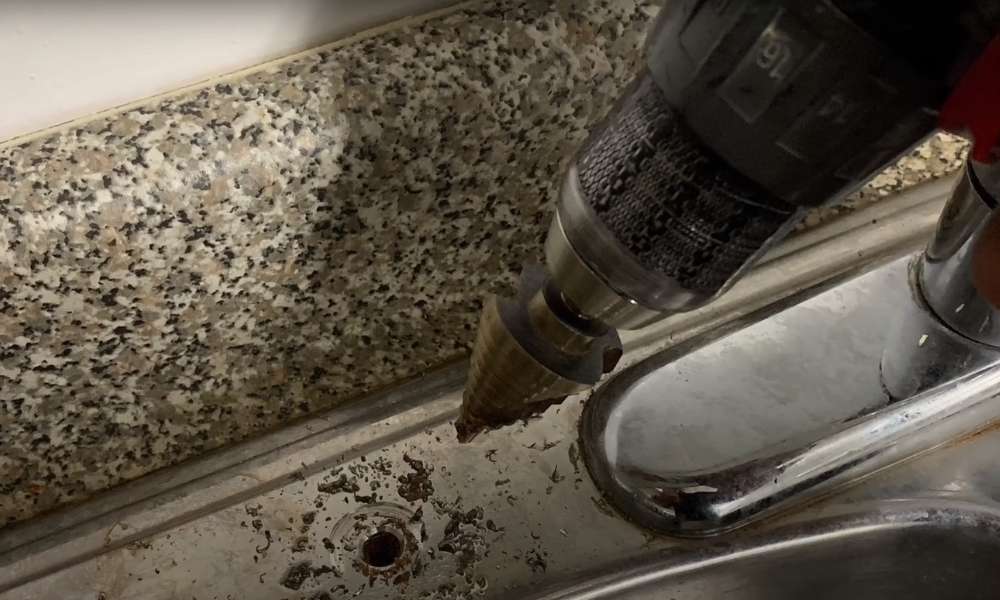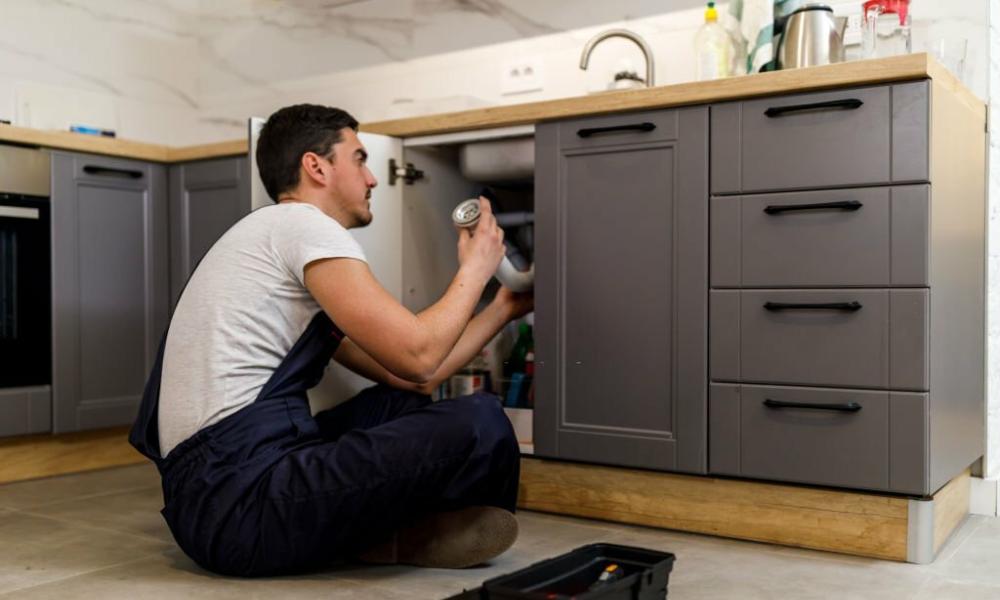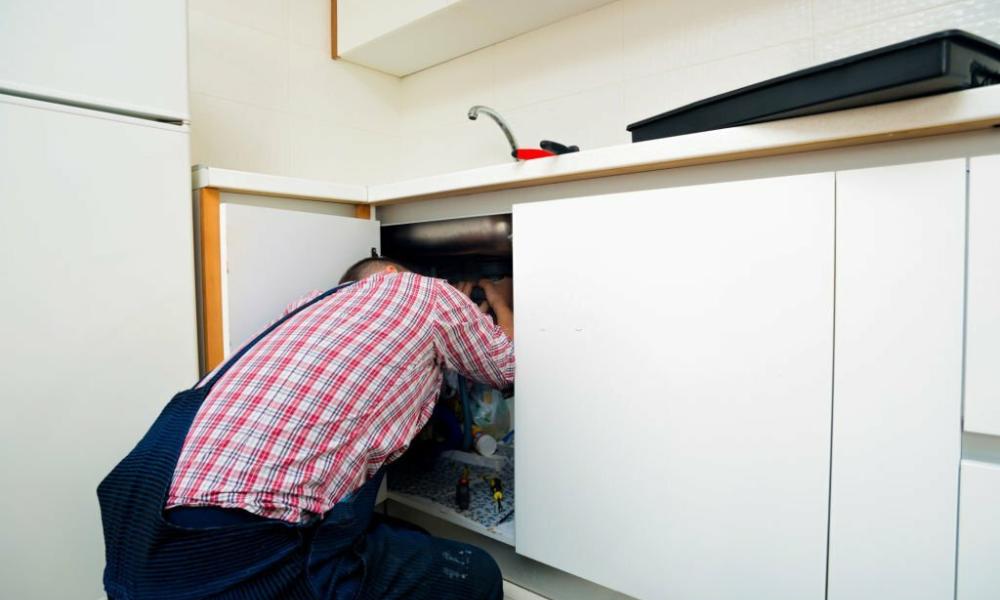To drill A hole in A stainless steel sink, Follow these steps: Use A carbide Or cobalt drill bit, Mark the spot to drill, Apply cutting lubricant, Start drilling at A slow speed, Gradually increase the speed, And Use steady pressure. Drilling A hole in A stainless sink can seem Like A daunting task, But with the right technique, It can be easily accomplished.
Whether you need To install A new faucet Or mount A soap dispenser, Drilling A hole in A stainless requires care And Precision. We’ll provide you with step-by-step instructions On How to drill A hole in A sink without damaging the surface.
From choosing the right drill bit to applying the correct technique, We’ll cover all the essential aspects to ensure A successful outcome. So, Let’s dive in And get started!
What Is The Best Drill Bit For Stainless Steel
Drilling a hole in a stainless steel sink may seem like a daunting task, But with the right drill bit, It can be done smoothly and efficiently. When it comes to choosing the best drill bit for stainless, There are a few factors to consider.
Firstly, Look for A bit that is specifically designed for metal drilling, Preferably with a high-speed steel construction. These bits are known for their durability and ability to withstand the tough steel material. Secondly, Consider the coating of the drill bit.
Titanium or cobalt-coated bits are recommended, As they offer increased hardness and resistance to wear. Lastly, Ensure that the drill bit has a sharp cutting edge for precise and clean drilling. Following these guidelines will aid in successfully holes in stainless sinks, Allowing for the smooth installation of faucets, Soap dispensers, Or any other fixtures you might need.
Mark The Hole
When drilling A hole in A stainless steel sink, The first step is to mark the hole location. This is a crucial step to ensure accuracy and prevent damage. To mark the hole, Use A pencil Or A marker to draw A small dot at the center of where you want the hole to be.
Measure And double-check the dimensions to ensure precision. It’s important to take your time during this step and make sure the mark is clear and visible. Once the hole is marked, You can proceed with drilling by following the manufacturer’s instructions for the drill bit and technique.
Now, You are ready to drill a hole in your stainless sink with confidence.
Lubricate
Drilling a hole in a stainless steel sink can be a challenging task, But with proper lubrication, You can make the process much smoother. Lubricating the drill bit is crucial to reduce friction and prevent overheating, Which can damage both the sink and the drill.
Before you start drilling, Apply a lubricant designed for metal surfaces such as stainless. This will create a slippery surface that allows the drill bit to glide through the metal effortlessly. Make sure to apply the lubricant both on the drill bit and the area where you want to drill the hole.
Additionally, Periodically stop drilling and reapply the lubricant to ensure optimal results. Remember to choose a lubricant that is compatible with steel to protect the sink from potential discoloration or damage. By following these guidelines and incorporating proper lubrication, You can successfully drill a hole in your stainless without any hassle.
Drilling A Hole In Stainless Steel Sink
Drilling a hole in a sink can be challenging if you don’t follow the proper guidelines. Firstly, It’s important to gather the necessary tools and materials such as a drill, Drill bits specifically designed for steel, Masking tape, A center punch, and safety goggles.
Once you have prepared everything, Carefully mark the spot where you want to drill the hole using masking tape. This will prevent the drill from slipping and damaging the sink surface. Next, AUse a center punch to create a small indentation at the marked spot.
This will help the drill bit stay in place while. Hold the drill perpendicular to the sink surface and start drilling at a slow speed. Apply constant pressure and periodically lubricate the drill with cutting oil or water.
Take breaks to prevent overheating and continue drilling until the desired hole size is achieved. Lastly, Clean up any debris and you’re done! By following these guidelines, You can successfully drill A hole in your stainless sink without any hassle.
Steady Pressure
Drilling a hole in a steel sink requires applying steady pressure to ensure a clean and precise result. By following a few guidelines, You can successfully complete this task without damaging the sink. First and foremost, It is important to select the right specifically designed for stainless.
Using a regular can result in dulling or chipping. Secondly, It is crucial to place a piece of masking tape over the area where you intend to drill the hole. This will prevent the drill bit from slipping and scratching the surface of the sink.
Lastly, Maintaining a steady pressure while drilling is essential. Applying too much force can cause the drill to jump While applying too little pressure can result in an uneven and messy hole. By adhering to these guidelines, You can effectively drill a hole in a steel sink without hassle.
Sand Down The Edges
Drilling a hole in a steel sink requires precision and careful attention to detail. Once you have successfully drilled the hole, It is important to sand down the edges to ensure a smooth finish. This step is crucial to prevent any sharp or jagged edges that can potentially cause injury or damage to your kitchenware.
Using sandpaper or a sanding block, Gently rub the edges of the drilled hole in a circular motion until they are smooth and even. Take your time and continuously check the edges with your fingertips to ensure they are free of any roughness.
Once you have completed this step, You can confidently move forward with your project, Knowing that the hole in your steel sink is safe and visually appealing.
Wrapping Up
Drilling a hole in a stainless steel sink can seem like a daunting task, But with the right techniques, It can be done smoothly. First, Gather all the necessary tools, including a drill with a high-speed steel bit and some lubrication like oil or water.
Next, Mark the spot where you want the hole to be drilled. This will ensure accuracy and precision. Then, Apply the lubrication on the spot to reduce heat and friction during the drilling process. Slowly start the hole, Using constant but gentle pressure.
It’s important to go slow and steady to prevent any damage to the sink. Once you’ve drilled the hole, Clean up any debris and check if the hole is the desired size. If not, You can use a wider or smaller bit accordingly.
With these guidelines in mind, You’ll be able to successfully drill a hole in your stainless sink without any issues.
Tidy The Sink
Drilling a hole in a stainless steel sink may sound like a daunting task, But with the right tools and techniques, It can be done efficiently. To ensure a tidy sink, You must follow these three guidelines. Firstly, avoid using commonly overused phrases or words that can make your writing appear repetitive.
Instead, Opt for fresh and engaging language that captivates the reader’s attention. Secondly, Vary the phrases at the beginning of paragraphs to keep the content interesting and prevent monotony. By choosing different expressions, You can maintain a sense of excitement throughout the article.
Lastly, It’s important to note that a conclusion paragraph should be excluded in order to maintain brevity and clarity in your writing. By adhering to these guidelines, You can create a well-crafted and engaging blog post on how to drill a hole in a stainless sink while maintaining a tidy appearance.
Drill Hole In Sink For Water Filter
Drilling a hole in a stainless sink may seem daunting, But with the right tools and techniques, It can be accomplished effortlessly. To begin, ensure you have the necessary tools: a power drill, A quality drill bit specially designed for metal, And A center punch.
Start by marking the center of the desired hole location with the center punch. This will help create a small divot that will guide the drill bit. Next, secure the sink firmly in place to prevent it from moving during.
With a steady hand, Slowly begin at a low speed, gradually increasing the speed as the hole deepens. Use steady pressure, but be careful not to apply too much force, as this can cause the drillbit to overheat or break.
Keep the drillbit lubricated with cutting fluid or oil to reduce heat and extend its lifespan. Once the hole is drilled, Clean up any metal shavings and smooth the edges with sandpaper. With these guidelines in mind, You can confidently drill a hole in your steel sink for a water filter installation.
Frequently Asked Questions For How To Drill Hole In Stainless Steel Sink
What Is The Best Drill Bit For A Stainless Steel Sink?
For stainless steel sinks, The best drill bit is a cobalt drill bit. It provides excellent performance and durability for drilling through stainless. Remember to use low RPM and lubrication to prevent overheating and prolong the life of the drill bit.
Do You Need A Special Drill Bit For Stainless Steel?
Yes, It would help if you had a special drillbit for stainless steel. It is a hard material, So a regular drillbit may not be effective. Using a high-speed steel or cobalt drill bit specifically designed for stainless will ensure clean and accurate drilling.
What Is The Trick To Drilling Stainless Steel?
To effectively drill stainless, Follow these tips: Use a sharp cobalt or carbide drillbit, Apply cutting oil or lubricant to reduce heat, Drill at slower speeds, Apply steady pressure And use A sturdy drill with a secure grip.
Conclusion
To summarize, Drilling a hole in a stainless steel sink requires proper tools, Preparation, And technique. By following the step-by-step instructions provided in this guide, You can successfully complete this task. Remember to prioritize safety, Use protective gear, And go slow to avoid damaging the sink.
With a little patience and practice, You’ll be able to accomplish this DIY project with ease. So go ahead and confidently transform your stainless steel sink into a functional workspace!




